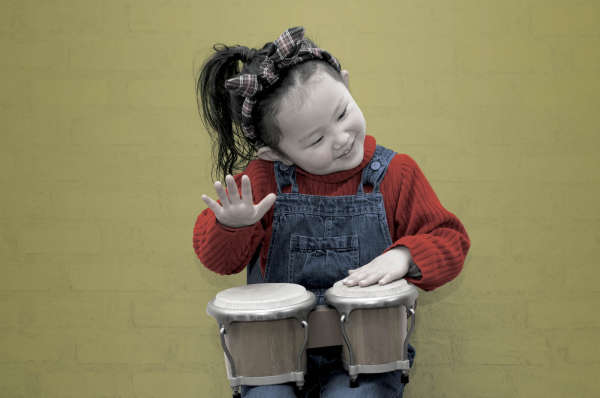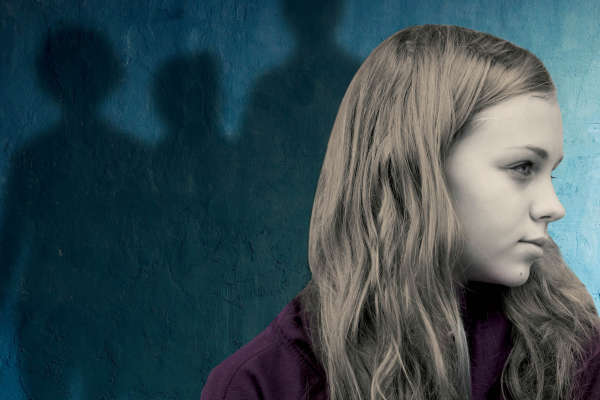I listen carefully as my colleague refers a student to school counselling. ‘I’d like you to work with Annie. She’s in Year 9, and she’s having a really hard time at home. Her mum and dad are separated, yet very involved. They disagree about what she needs. It must be tricky being her.’
In my first session with Annie, I find out that, in fact, her parents split up when she was eight years old. Her father has a new girlfriend, her mother is single. She says her parents get on ‘OK, mostly; sometimes Mum gets angry about Dad’s girlfriend’. As Annie describes her weekly routine, I imagine a military operation. Her parents have joint custody, so she travels every week between houses, alternate weekends in different villages, navigating the variations in transport, rules, chores and interpersonal relationships. Explaining it all to me, she says: ‘It’s pretty impressive really that I always manage to have my PE kit and the right books on the days I need to do homework.’ I agree, marvelling at the fact that she carries all her school books in her bag, just to be on the safe side – along with her toothbrush, clean socks and knickers, asthma medicine and a tiny teddy bear. At the end of our session, as I pick up her bag to pass it to her, it seems like a physical embodiment of the emotional situation, and as she leaves the room, I feel like it’s going to take some time for us to really understand the heaviness of her situation.
When parents split up – even if it is in the best interest of the whole family – it has an effect on the family system for a very long time. According to Kelly and Emery,1 ‘although some children are harmed by parental divorce, the majority of findings show that most children do well’. Most families do fare better after divorce when parents are more emotionally stable, available, and the difficulties of living together are finished. However, this transition can be complicated when the separation is acrimonious, when parents experience mental health difficulties, or have the financial pressure of being single parents.
Klein wrote about our capacity to split – to identify and seek out what is good and to disavow aspects that are trickier or more uncomfortable to feel. An essential aspect of being mentally healthy is to integrate these aspects – the good and bad; working towards a healthy assimilation, where one can tolerate the mediocre – where we can hold in mind that sometimes one person may be distant and disinterested, and other times they can be loving and attentive. Thus one person can be both good and bad.
One way we learn to tolerate this is through telling our stories – personal but also familial. Fivush et al2 write that ‘co-constructed narratives of personal and familial experiences are critical in the construction of self and the understanding that self is continuous in time’. So it’s not only the emotional context that is important – understanding the temporal and generational context can help anchor and root clients in a more solid sense of self.
During any loss or bereavement, families operate in multiple time zones, all in different places with their grief. Family systems often struggle to support one another. This is true of separation. Often during family separations, a parent attempting to untangle themselves from the previous relationship may start to rewrite a story that contains their feelings of abandonment, or betrayal, or anger, or fear, so that the other parent is cast as a ‘villain’, a cheater and disloyal. As one parent processes their feelings of grief and anger, they can cast themselves as a victim and portray the other parent as a perpetrator. The child can be stuck in the middle as a rescuer – perhaps unsure of who to rescue because they are afraid to be disloyal to either. Well-meaning supportive aunties, uncles, grandparents and family friends can collude with separation stories and cast parents into roles of goodies and baddies. Children need to maintain a good connection to their primary caregiver and so will often subconsciously choose that ‘side’.
Compared with married parents: ‘Not only are divorced parents more prone to emotional lability, but depression, alcoholism, drug abuse and psychosomatic complaints are more frequent... Some children and adolescents become the sole emotional support for their distraught and needy parents.’1 As therapists, we need to observe how much the child is supporting their parent’s emotional needs, as this may become a safeguarding issue. In therapy with Annie, as she talks about her mum’s anger, I may ask how it would be for me to work with her parents (either separately or together) to let them know how their behaviour is affecting her, to think together about what the situation might be like for Annie, and to identify what support the parents have themselves – particularly Annie’s mum.
We all know that the people we love bring out different shades and colours in us, and that these change, depending on the company we keep. The adolescent’s blunt tools to aid the process of separation and individuation revolve around having parents to question, to push against, to critically evaluate and to reject. It helps them to formulate their own beliefs and mannerisms. ‘I hate the way my mum is so bossy, so I won’t be bossy.’ This becomes trickier when one parent is already being critical of the other, when the child is already hearing the shortcomings and inconsistencies of the other parent.
Shattered and fragmented
A danger with discordant families who don’t speak to each other is that children may feel shattered, split into many fragments. Consciously, they may affiliate themselves with one ‘side’, but unconsciously they will feel anxious that they are similar to the ‘other side’ – the deserter, the ‘bad mum’. They may feel shame or resentment for family resemblances or inherited skills, characteristics or aptitudes. The child may then take on a fragmented sense of self, whereby aspects of self are disregarded or disliked. Oaklander writes: ‘Fragmentation is a disastrous result of self-depreciation. Integration begins to take place when we can help the child to understand the function and purpose of those parts.’3 It’s interesting to think of popular culture portrayals, such as Luke Skywalker and the ultimate ‘bad dad’ – Darth Vader. Perhaps individuating from parents is a life’s work, but that work is easier when the sides are less imbued with meaning.
Pablo is 15. His parents split up acrimoniously two years ago because his mum had an affair. Pablo lives with his mum but regularly sees his dad. He gets on well with his mum and adores spending weekends in London with his dad, but his dad calls his mum a slut. Hearing his dad criticise his mum, Pablo feels, unconsciously, like a part of him is also being criticised. Part of him is under threat; he wonders whether his father can love him ‘unconditionally’ if perhaps Pablo reminds his father of his mum’s ‘slutty’ behaviour in some way. Pablo is faced with the Winnicottian dilemma of creating a ‘false self’ to hide behind, to protect aspects of himself that are like his mother. Working therapeutically, we do the opposite of what Gwyneth Paltrow and Chris Martin called ‘conscious uncoupling’. We facilitate a space where a sort of ‘conscious re-coupling’ occurs. One where the young person can rewrite a narrative connecting the opposing forces of Mum and Dad – so that the yin and yang can overlap and sit temporarily together, enabling the young person to integrate all aspects of themselves in a healthy way.
According to American psychologists Fivush et al,2 stories create the foundation upon which we develop: ‘For adolescents, the ways in which families guide them to create more collaborative and integrated narratives may be an important factor in their developing sense of self.’ And when families are unable to tell stories, the therapist and client can co-create the story.
In 2015, I worked on Fragments – a project run by Oxfordshire Youth Arts Partnership (OYAP) Trust and Oxfordshire Family Mediation.4 The aim was to produce a website resource made by, and for, young people who had experienced parental separation. We worked with groups of young people from schools in Oxfordshire to create responses and supportive material and resources, and then designed and created the website with them. Initially, the young people said that they weren’t really bothered by the separation. But as the work progressed (students were creating animations, poetry and raps), it became clear that everyone had been deeply affected by the break-ups. Yet all of the children felt that they’d had to get on and cope with the situation. In general, there was an unconscious assumption that, within the family system, there was little (or no) space for the child’s feelings of grief, loss and anger. It made me wonder whether perhaps, during the separation, children do just get on with it – but a year or two later, once the home situation has settled, perhaps the children’s grief sets in.
Ambiguous loss
Pauline Boss coined the phrase ‘ambiguous loss’5 – where there is an absent presence, or indeed an ever-present absence. Research shows that the sudden disappearance of a parent can have an adverse effect on the child. Sinead’s father left when she was one. She has never met him and her mum speaks little of him. All Sinead knows is that he was violent, he was a drug addict and he beat up her mum several times. Referred to me because of her angry outbursts and anti-establishment attitude to school, a huge part of our work is Sinead recovering a sense of self and identity. However, this work is delicate and tricky. It must be facilitated with a sensitive approach, in which compassion and kindness are offered to all parties. Indeed, it must be a process in which shame is gently acknowledged, coaxed into the light… where feelings of anger, grief and sadness are also welcomed on the therapeutic journey... and where we gently acknowledge that we can’t force anyone into forgiveness. A safe way to explore absent parents is by asking about wider family. I ask Sinead about her father’s family – her aunty who sends Sinead Snapchat messages; her paternal grandparents and cousins; could they offer Sinead the possibility of connecting with her father’s more positive attributes, alongside the negative ones?
Absent connections?
When there is no connection to the blood parents – a child has been adopted, or their father was a sperm donor – then we work in complete darkness. But we can create a sort of ‘guess who’ game, exploring the ‘unknowns’. Together we make a speculative inventory of personal qualities; we outline attributes, wonder and hypothesise about where these qualities come from. ‘I am determined, like my mum... I’ve got her drive, her fieriness, but I am different from her because I am more introverted, so perhaps my father was quieter.’ Or: ‘Mum is crap at sport, but I’m really good, so perhaps my dad was good at sport.’ Working with imagination helps define a sense of self. It’s a categorising, a sorting process, of both the known and the unknown.
Even if the inventory isn’t 100 per cent accurate – which, of course, it won’t be – this is an imaginative response to the nature/nuture theory, and the process enables young people to voice what they are imagining anyway, to bring their secret silent self-wonderings out into the open. According to Arabella Kurtz: ‘Truth in psychotherapy is in its essence dynamic because it derives from the perspective of a living being whose external and internal characteristics change, even in small ways, over time.’6
Much of adolescence is about feeling cast out, disconnected, alone, desperately wanting to belong, while aching for something that defines and makes you distinct. Seeing hints of yourself in family lines can be grounding. It can give you a shape or an outline to aspire to – or rebel against. We can retrace intergenerational steps. When we avoid splitting, and give our clients the possibility to integrate the overlap of yin and yang, of mum and dad, we help them feel more rooted and more comfortable in their own skin. In therapy work with Annie, we’d find opportunities to wonder about her parents’ similarities, in order to create a tapestry of self, weaving a weft of the threads of parental commonalities and togetherness. Over this we would lay a marvellous warp of parentally distinct differences, defining the edges.
Multiple separations
Not much is said, or written, about the impact of multiple separations. In our society, many young people have survived multiple parental separations. Connor’s parents divorced when he was two. He’s now 12 and his dad has been with Debbie for three years. Debbie has two sons similar to Connor in age, and they’ve been on several family holidays together. This year, they spent Christmas with her parents. Connor comes to his last session looking really sad – Debbie has texted to say she is leaving Dad. On Connor’s next weekend visit, his father will be in a new flat; it’ll just be the two of them. Connor reckons it will be awkward and painful, yet neither father nor son will voice it.
In our session, I imagine all the feelings that Connor may have – no chance to say goodbye to Debbie or her sons, and the possibility of re-experiencing his original parental separation. While the relationship is completely different, and his father may be in a very different place, there are resonances and currents of feelings that ripple through Connor’s core. And in addition, he has lost contact with Debbie, and with his ‘almost step-brothers’.
I am not against divorce and separation. This article advocates for the child’s right to grieve about separation. It’s my hope that, as adults around separating children, we can create a protective scaffolding that supports the child to piece together the jigsaw of their identities – allowing both parents to be viewed in a compassionate light; allowing all emotions to be felt and expressed. As adults, we have a duty to facilitate the process of young people’s individuation as gently as we can – allowing them the possibility of expressing their anger, their loyalty or their disloyalty. We need to give them space to create their own self-narrative, piecing the fragments back together in a meaningful way, helping them live with a more whole – and integrated – sense of self.
Charlie Morse-Brown has worked in the arts and with young people since 2004. In 2012, she trained at Middlesex University for a postgraduate diploma in integrative child and adolescent counselling and psychotherapy. Alongside this, she has a small private practice and is a school counsellor, as well as creating and facilitating arts projects with disadvantaged young people in Oxfordshire.
More from BACP Children and Young People journal

Ghosts in the playroom
Open article: How far do we follow the client? Do they really know best? Henry Kronengold lets us in on a case where music helped a young girl with her anxiety issues. BACP Children and Young People, June 2017

The transgenerational perspective
Open article: How can grandmothers, uncles, great-grandfathers or long-lost cousins haunt or help a young person’s life? Lucy-Jean Lloyd addresses the question. BACP Children and Young People, March 2017

Admitting the T word
Open article: Jeanine Connor addresses difference in the form of sexuality and gender, including transgender, and invites us to work out how we will welcome all such diversity into our counselling rooms. BACP Children and Young People, December 2016
References
1 Kelly JB, Emery RE. Children’s adjustment following divorce: risk and resilience perspectives. Family Relations 2003; 52(4): 352–362.
2 Fivush R, Bohanek JG, Duke M. The intergenerational self – subjective perspective and family history. In: Sani F (ed). Self continuity: individual and collective perspectives. New York: Psychology Press; 2014 (pp131–144).
3 Oaklander V. The therapeutic process with children and adolescents. Gestalt Review 1997; 1(4): 292–317. www.gisc.org/gestaltreview/documents/TheTherapeuticProcesswithChildrenandAdolescents.pdf (accessed 8 July 2017).
4 www.familybreakups.com/home/4590110671
5 Boss P. Ambigious loss: learning to live with unresolved grief. Cambridge, MA: Harvard University Press; 1999.
6 Kurtz A, Coetzee JM. The good story: exchanges on truth, fiction and psychotherapy. London: Penguin; 2015.
